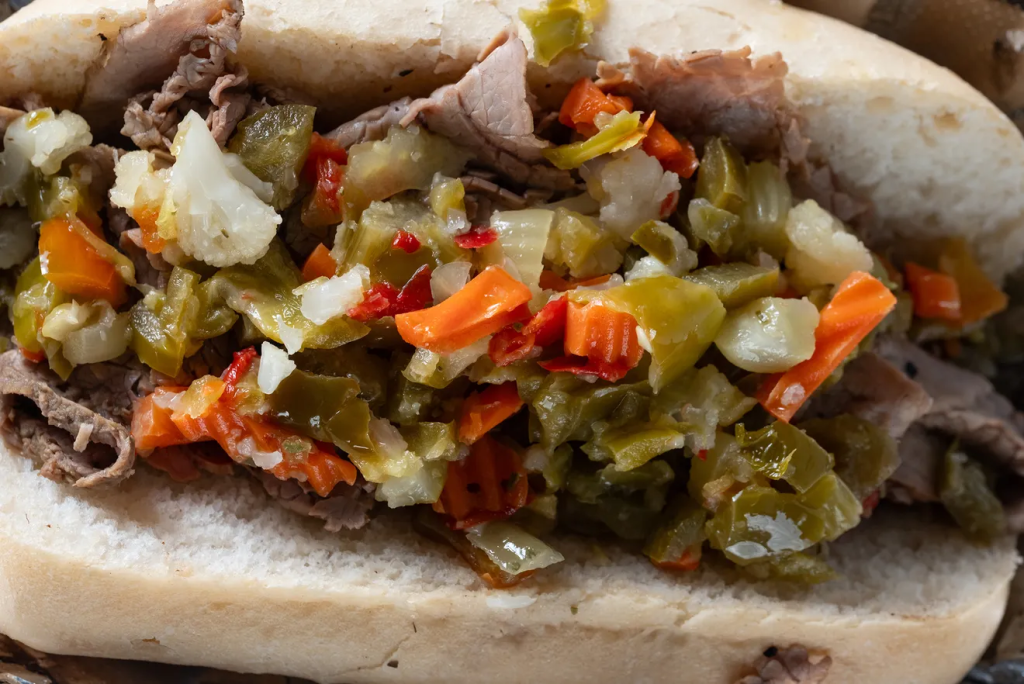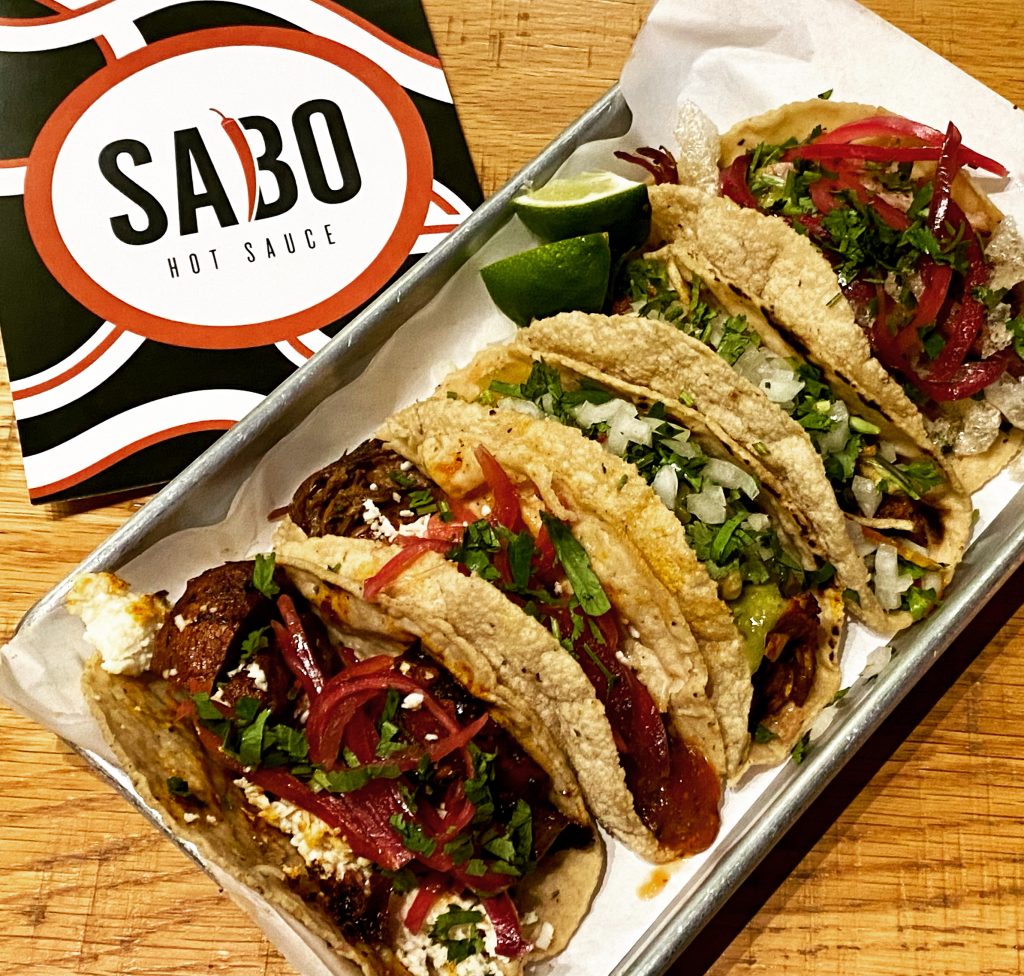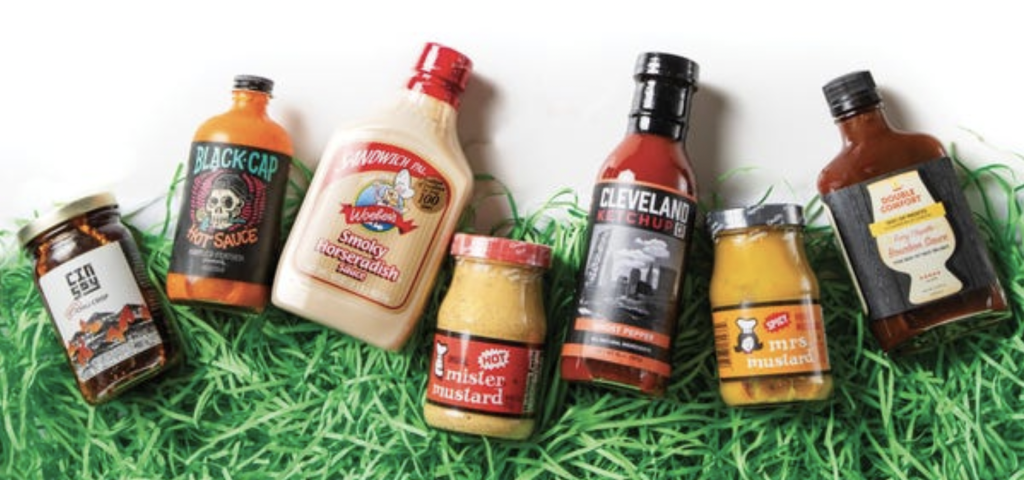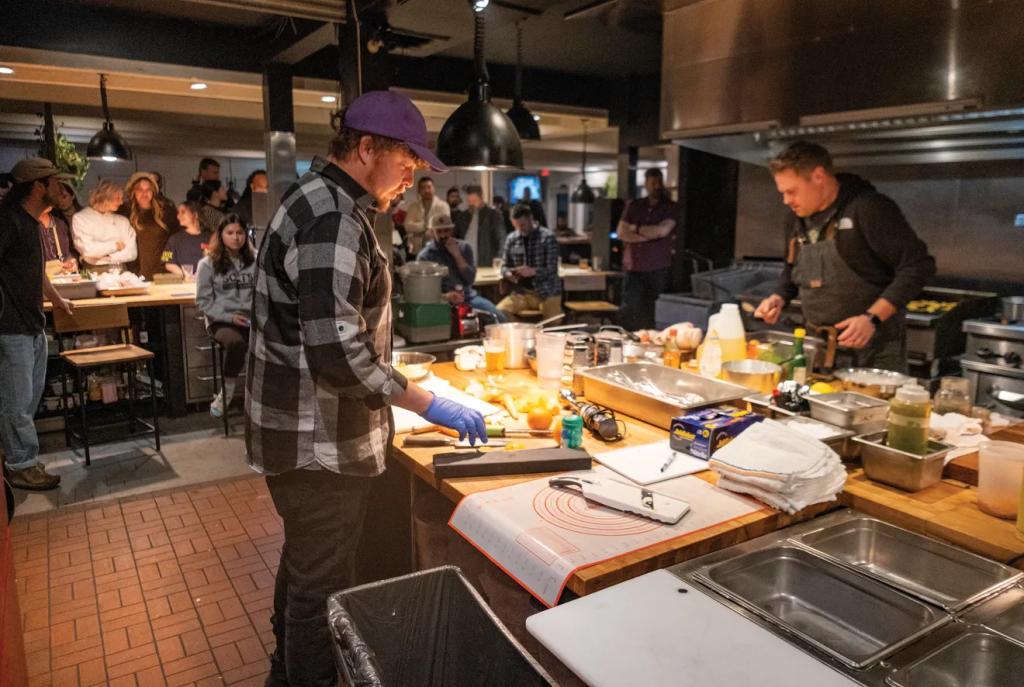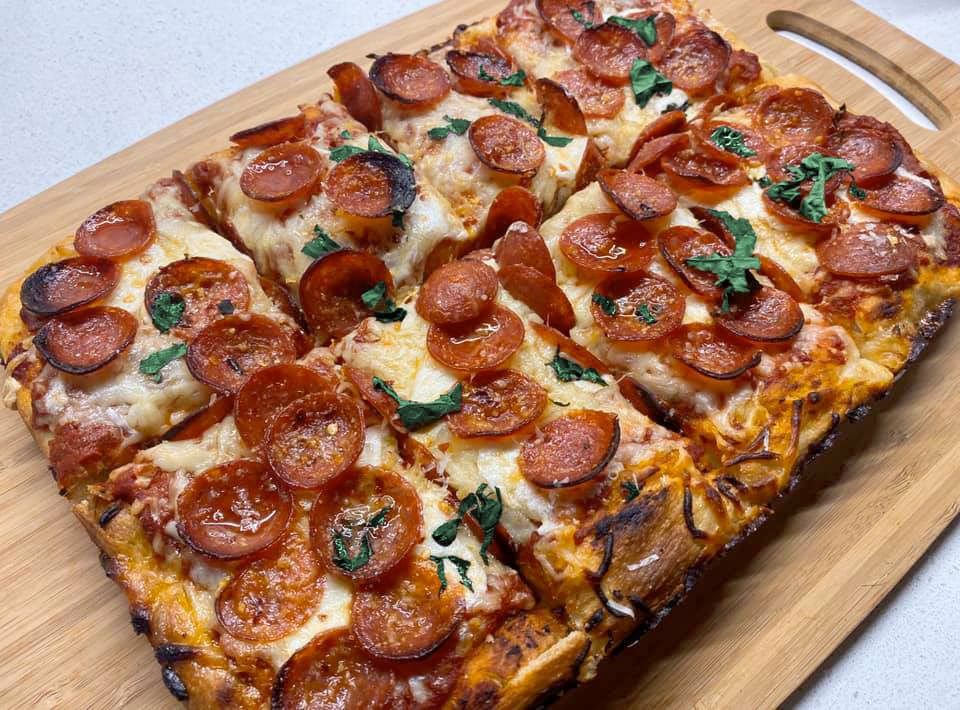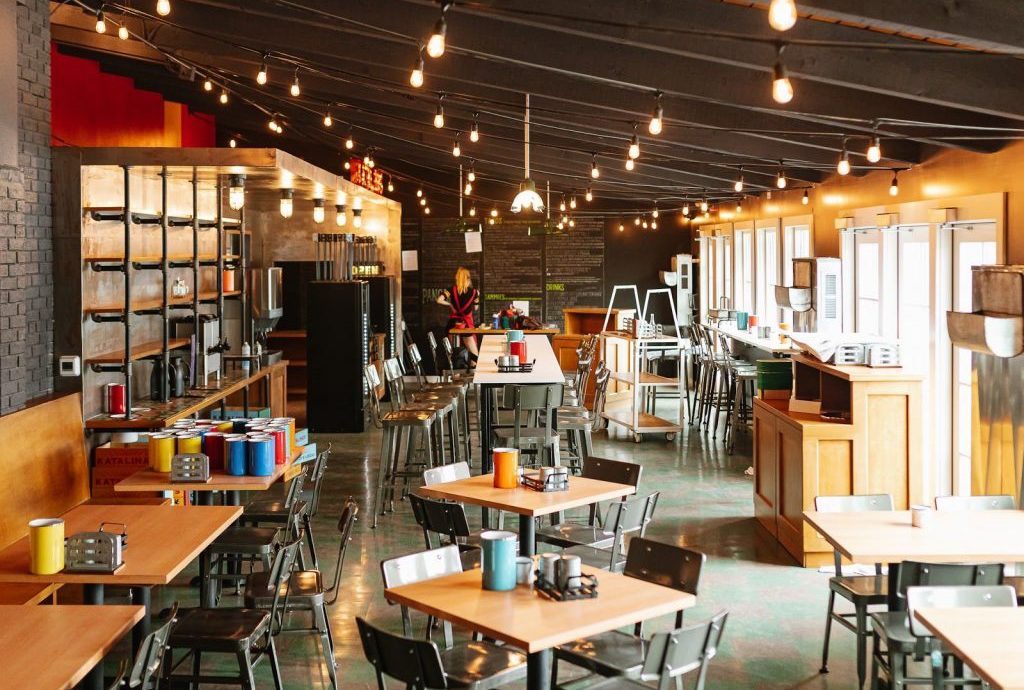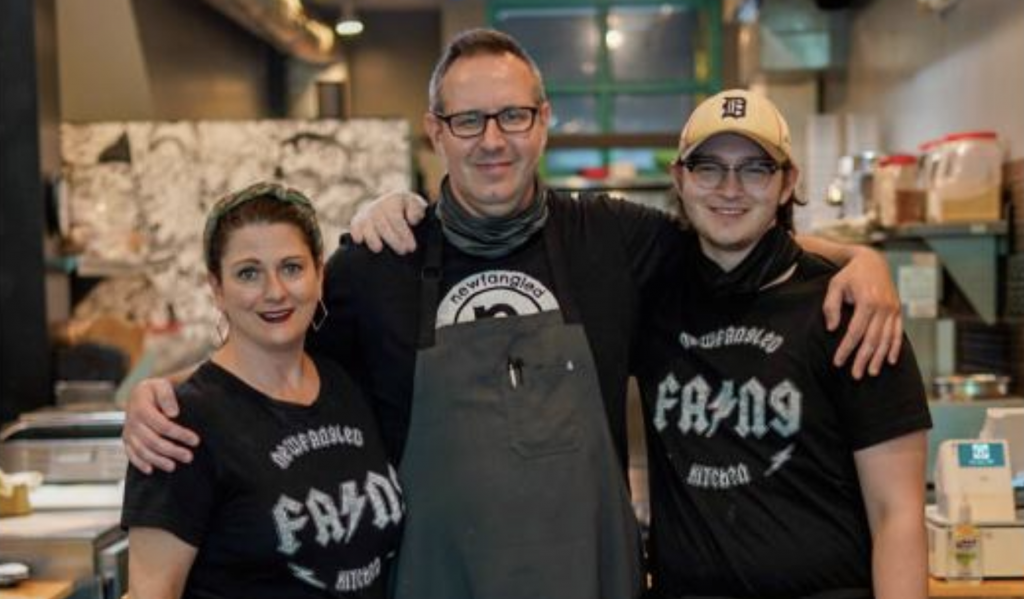Originally published in the December 2024 issue of COLUMBUS MONTHLY

Among the most dreaded calls any restaurant owner could receive is one requiring them to temporarily close—unless that call comes from Guy Fieri. When the host of Food Network’s Diners, Drive-Ins and Dives decides a beloved local joint deserves national attention, it’s worth celebrating.
“You’re sworn to secrecy and you have to close for a couple of days. But we only close on Sundays and holidays,” said Yianni Chalkias, owner of King Gyros. Since opening more than three decades ago, the menu and dining room have expanded from fast causal fare to a full service Greek restaurant in the heart of Whitehall. “They said we’re just the kind of place they look for, where everything is made from scratch. So I made an exception.”
Born in Greece, Chalkias immigrated shortly before his tenth birthday and started working in his family’s restaurants until opening his own. Even during the pandemic and throughout extensive remodeling that transformed an abandoned Taco Bell into an immersive Acropolis-inspired destination for Mediterranean home cooking, King Gyros never closed—not one day, much less two. But Fieri’s praise doesn’t come easy, and Chalkias was eager and honored to join a growing fraternity of eponymous eateries including quintessential Columbus favorites like Tommy’s Diner, Katalina’s, and soon Wario’s Beef and Pork.
“Guy is looking for something special that nowhere else has. We have 26 homemade desserts. We grow our own herbs and serve dishes that would cost twice as much at other restaurants,” Chalkias said. “When I told them we grind our own lamb, they asked me to send some pictures of the kitchen. That’s when I knew they were really interested.”
Born in Columbus and raised in California, Fieri discovered his love of food early as well. Also at age 10, he turned his bicycle into a mobile soft pretzel business and earned enough by age 16 to travel to France to improve his kitchen prowess. Forty seasons and more than a thousand underrated restaurants later, Fieri’s fondness for his hometown isn’t so secret. An online petition to rename Ohio’s capital city “Flavortown” quickly garnered 130,000 signatures back in 2020. The food and music festival of the same name, originally scheduled to coincide with the opening of Guy Fieri’s Trattoria at Eldorado Scioto Downs this past June, was moved to the back burner. However, his appetite for wholesome eats and local spots that serve them remains voracious.
“We talked about recipes and ingredients in the weeks before the shoot, how different dishes might work,” Chalkias said. “On the final call they decided on Yiayia’s Dolmades and Pappous’ Lamb Chops. They’re named after my yiayia, which is Greek for grandma, and my pappous, which means grandpa. It was perfect.”
The secrecy isn’t just to keep a lid on which restaurants will appear in upcoming episodes, though Fieri’s familiar red Camaro isn’t exactly inconspicuous and astute fans of the show sometimes spoil the surprise. Some dishes don’t make the cut, and some places don’t either. It was actually a fellow restauranteur who recommended King Gyros for the culinary itinerary. Closing for a couple days is more logistical. Just try squeezing lighting, sound, and camera crews into an already cramped kitchen as orders keep pile up. The second day of shooting is for select patrons to share their fondness for the food, recommendations and memories, and why the restaurant is such a beloved part of the community.
“We started getting ready at 9AM on Friday, and Guy was here from around 2PM to 4PM. They even kept his car covered up except when they were shooting,” Chalkias said. “Everything was wrapped up around 5PM, so we opened up for the rest of the night. The second day of shooting was Sunday, when we’re closed anyway, so we didn’t have to close two days after all.”
Though not part of the show, there’s a camaraderie among restauranteurs and sharing notes is also part of the experience. Fieri gave a nod to Chalkias for branching out into catering, a strategy Sweet Carrot embraced exclusively, stepping back from retail restaurants entirely despite rave reviews and an earlier appearance. He also acknowledged their similar age and the need to slow down and maybe take more days off, even if the restaurant is open.
Three months later, during the annual Columbus Greek Festival, more than a hundred family, friends, and patrons gathered in the parking lot to watch the episode projected on a giant screen. Equal parts block party, backyard cookout, and class reunion, neighbors, long-time fans, and former staff dating back to the early days of the restaurant mixed and reminisced until a hush fell over the lines of lawn chairs and standing room only crowd. They listened intently as Chalkias carefully prepared and seared his signature lamb chops, and laughed along as Fieri chided repeatedly over the lemon dill sauce complementing the dolmades, or stuffed grape leaves, each artfully rolled by hand.
A rousing dedication by Chalkias to his supporters and staff, past and present, drew cheers and more than a few tears soon remedied by a buffet of dishes featured on the show, as well as some of those legendary desserts. Weeks later, the limelight hasn’t seemed to fade with new patrons discovering King Gyros every day.
“
Following the episode, there was a 50 percent increase in business. Now it’s closer to 25 percent and we expect to stay busier in the months ahead,” Chalkias said acknowledging the long tail that tends to follow an appearance on Diners, Drive-Ins and Dives. “When people travel, they check old episodes to find unique places to eat. We think we’ll see that impact for years to come. But it’s an experience I’ll never forget.”
▩
King Gyros is located at 400 S Hamilton Road. For menu and specials, visit kinggyros.com and follow on Instagram @kinggyrosgreek
Looking for more oF Guy Fieri’s favorite STOPS IN FLAVORTOWN?
No one visiting Columbus should leave hungry. Here are are additional Central Ohio spots from previous episodes of Diners, Drive-Ins, and Dives.
Loops | loopsgoodfood.com
Grandview
Season 27, Episode 8
Chicago Italian Beef and the house-made All-Pork Gyro, The Titan
Pierogi Mountain | pierogimountain.com
Downtown
Season 27, Episode 9
Ethiopian-inspired Misir Wot Pierogi and Chicken Paprikash
Ray Ray’s Hog Pit | rayrayshogpit.com
Clintonville, Franklinton, Westerville, Granville, Linworth
Season 27, Episode 9
Mangalitsa Bratwurst Burger and Dry-Rub St. Louis Spare Ribs
Sweet Carrot | sweetcarrot.com
German Village
Season 27, Episode 10
Beef Brisket Corn Cake and Sweet Chili Chicken Meatball Sandwich
Ena’s Caribbean | enascaribbeankitchen.com
South Linden
Season 28, Episode 1
Signature Spicy Jerk Chicken and Fried Escovitch Red Snapper
Momo Ghar | northmarket.org
Downtown
Season 28, Episode 2
Nepali-Tibetan Momo and Grilled Chicken, Potatoes, and Bodi
Katalina’s | katalinas.com
Harrison West, Clintonville, Bexley
Season 40, Episode 2
Dulce de Leche Pancake Balls and Everything but the Chicken Sink Sammy
High Bank Distillery | highbankco.com
Grandview, Gahanna, Westerville
Season 40, Episode 7
Hot Honey Chicken and Biscuits and Barbacoa Nachos
Joya’s | eatatjoys.com
Worthington
Season 40, Episode 8
Bacon and Chicken Fried Rice and Lamb Kati Roll
Wario’s Beef and Pork | wariosbeefandpork614.com
Downtown, Clintonville
Season 40, Episode 10
Ribeye Cheesesteak and Rosemary/Fennel Roasted Pork
